Narrowboats are not really built for tides and the sea. They have no keel,so are rather unstable, and vulnerable to side-on waves. They have big spacious foredecks, ideal for sitting and enjoying a lazy gin and tonic, but also prone to filling up with tons of water if one is swamped by the raging seas. At 50 horsepower and 15 tons, they have a terribly sluggish power-to-weight ratio and are thus slow and under-equipped to escape the hazards of the sea: waves, weather, big shipping.
This being said, Britannia never ruled the waves because our fleet pussy-footed around and hid under the covers at the first sign of peril. Thus, with a lot of preparation, good weather, the right insurance, and a touch of British seafaring grit, there are several tidal challenges the intrepid narrowboater can sensibly take on:
The tidal Thames from Teddington to Limehouse: beautiful bridges, breathtaking history, and avoiding the big waves from the Thames Clipper: https://nbfelucca.wordpress.com/2013/10/30/the-river-thames/
Crossing the Wash: Stump, seals and sandbanks: https://nbfelucca.wordpress.com/2014/05/14/the-wash-up/
Down the tidal Trent between Cromwell and Keadby: https://nbfelucca.wordpress.com/2014/06/19/the-trent/
The Ribble Link, which joins the Leeds & Liverpool Canal with the Lancaster Canal at Preston. (We’ve not done that one.)
Perhaps the daddy of them all is tackling the Severn Estuary. Between 30 and 60 narrowboats make this journey each year, apparently. And we did it on Tuesday!
But why, you may quite justifiably ask. A quick glance at the map explains all:
The Kennet & Avon Canal runs east-west from Reading to Bristol, and there it ends, at Bristol Floating Harbour. Anyone who fancies exploring this apparently glorious waterway therefore needs to do an “out and back”, from Reading to Bristol and back to Reading, about 60 hours’ cruising each way. However, a traveller willing to pootle 20-odd miles up or down the Severn Estuary can link to the upper Severn and from there to Worcester, Birmingham, the Midlands, etc. A cul-de-sac becomes an exciting through-route to pastures new.
Thus, having so far ignored the “K & A”, we decided to go for it after all, and so hotfooted it down to the Severn from Manchester, in preparation for another tidal adventure.
The Severn Estuary has many perils and is not to be trifled with. Much of this is down to the tide. Out in the middle of the open ocean, the tidal range is about 60cm – in other words, the water rises two feet from low to high tide. However, in coastal areas, this range can be much greater. Consider, if you will, the geography of southwest England and Wales:
Between the south-west corner of Wales and Land’s End in Cornwall, there is a big “funnel” of sea that narrows as it approaches Bristol. So when the tide comes in, that 2-feet of water that were insignificant out at sea, are squashed and squeezed up the funnel. The water has nowhere else to go, so approaches the narrowing in a great bulge. This increases the tidal range by a considerable amount. By the time you reach Avonmouth near Bristol, the tidal range – during spring tides at least – is over 50 feet (15m). It’s one of the most tidal places on earth: http://www.co-ops.nos.noaa.gov/faq2.html#26
This makes the Severn Estuary a treacherous place. In the hours between low and high water, mile upon mile of drab mud is enlivened by the sudden arrival of up to 50 feet of water. The tides can run at up to 13mph. For the navigator in a state of the art big steel ship, this can be tricky. For a pair of cowards on a narrowboat, it would be deadly. Therefore, preparation is very important indeed: you must check your engine is good nick, ensure the weather forecast is right, and fill up with diesel. Most importantly, get someone in to do the trickiest bits. Hence our employment of a pilot, Rick, who is used to manoeuvring the big grain and fertiliser ships up the estuary, and for whom a titchy narrowboat is child’s play.
As is customary for slow lumbering craft, we did the journey in two legs. You leave Sharpness at high water, and ride the outgoing tide down (“ebb”) to Portishead. You wait there until the tide starts coming in again, and ride the ingoing tide (“flood”) up the tidal River Avon to Bristol:
So off we went, setting off at 7.20am and pootling into Sharpness Docks:
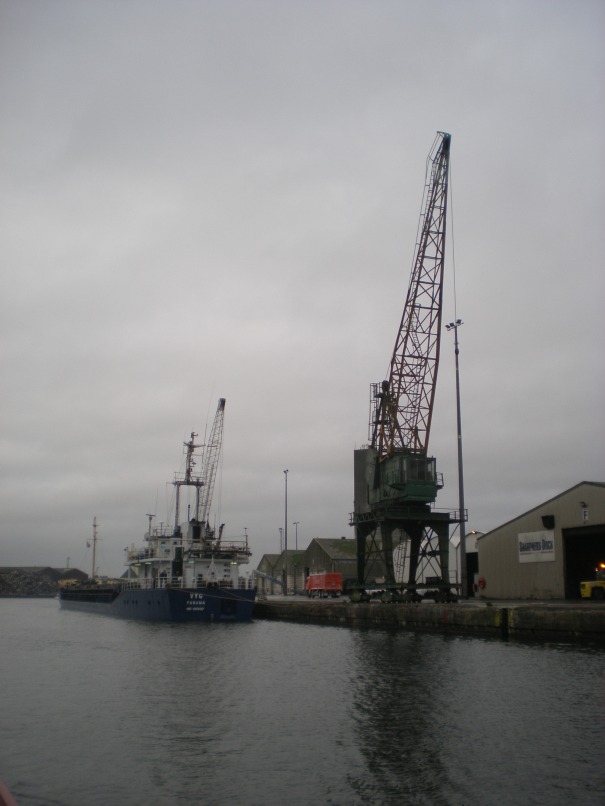
Sharpness Docks. Used for importing coal, animal feed, and fertiliser, amongst other things. Scrap metal goes out the other way.
Once through the dock basin, we tied up in the lock with a ragtag bag of other miscellaneous adventurers, put the kettle on, and waited for our pilots, and the tide, to arrive.

Various pleasure craft moored in Sharpness lock, awaiting a jolly voyage on the Severn. Some appropriately kitted out with strong lightweight hulls, big engines, radar, etc. Others less so.
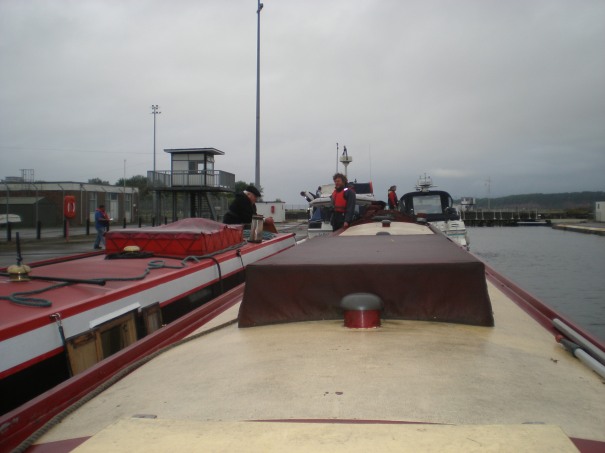
The first mates confer. Tom consults with Steve, from a fellow narrowboat, Gnum Pus, who were also doing the trip that day. Very nice to have company!
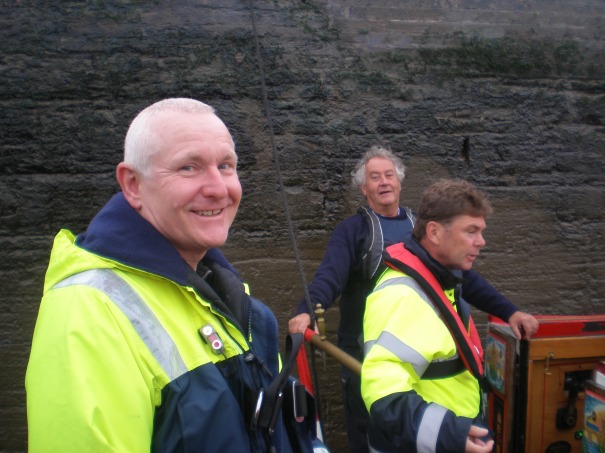
The cavalry arrives. Rick and Tim, the two pilots, in natty high vis wear. Also with another Tim, captain of Gnum Pus.
The massive lock emptied and spat us all out into the treacherous River Severn. All the plastic boats put the throttle down, and had disappeared over the horizon in a matter of minutes. Tortoise-like, with a grim sense of purpose, Felucca and Gnum Pus chugged slowly out past the Sharpness breakwater and into the main flow of the Severn. Sitting at the bow (front) of the boat, I watched the water boiling and racing around the foot of the breakwater; then, as we came out into the main channel, the tide grabbed us and pushed us backwards, despite Felucca’s engine roaring against the current…
At the stern, however, Emily and pilot Rick were in calm control, and pushed forward slowly into shallower water at the river’s margins, where the tide was less boisterous. After twenty minutes of inching forward as if through treacle, the tide turned and began to run out, in the direction of our travel; soon we were zooming along at 10 knots, nearly 12mph.
The Severn Estuary here is big and bleak. Visibility was okay but there was low cloud and fug; and a generally moist and foreboding atmosphere in contrast with our previous tidal adventures. The water was choppy and brown; the coastlines on either side grey, blurred, and dotted with nuclear power stations. We kept cheerful by drinking tea, eating sausage sandwiches, and asking the pilot stupid questions, which he bore with good grace and impressive, wide-ranging knowledge.
About halfway along, you go under two enormous bridges. First, the old Severn crossing now known as the M48. This is a big old classic suspension bridge.
Then, the newer of the two structures, built with more lanes to take the ever-more-busy M4 over to Wales. This is of a viaduct design at either end, with a suspended span over only the central, deepest section. These are triumphs of engineering muscle rather than beauty, in contrast with some fine Telford bridges upstream, or the iconic spans in central London.
More bleak vastness followed. Three hours after leaving Sharpness, we approached Avonmouth, where the River Avon enters the Severn. However, the tide was still going out, and if we’d gone up the Avon then, we would have run out of water before we got to Bristol. We therefore broke our journey at Portishead marina, just southwest of Avonmouth.
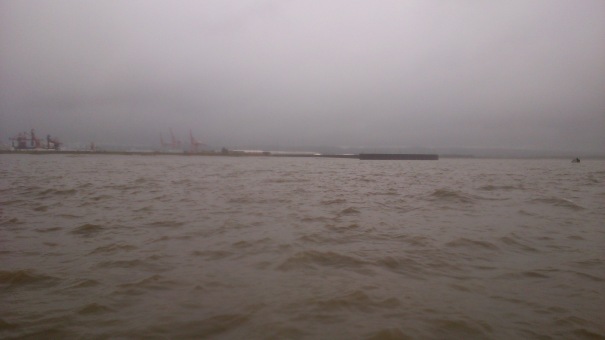
Avonmouth Port. Most of the trade nowadays uses these bigger ports, rather than going all the way up to Bristol. Amongst facilities here is an orange juice concentrate plant.
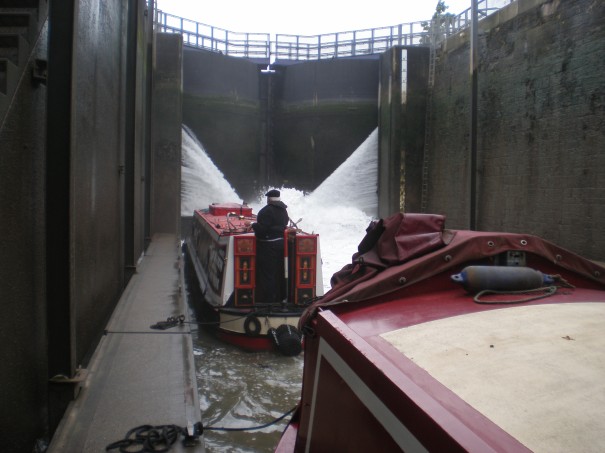
Most locks on the lovely civilised canals have nice sluices to let the water in, in a controlled fashion. This lock uses a sophisticated modern method known as, “just open the gates a bit see what happens”.
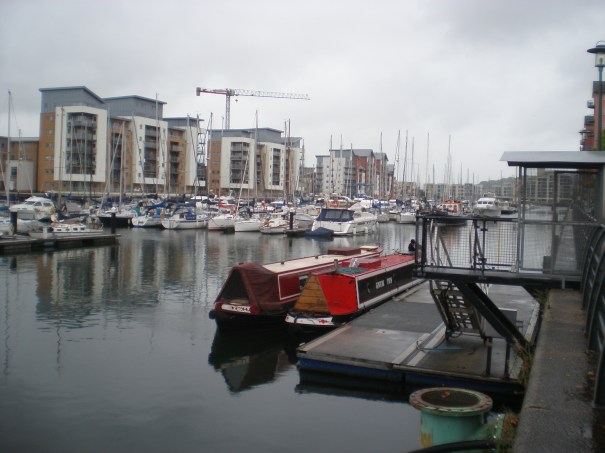
Lunchtime mooring in Portishead Marina. Felucca and Gnum Pus cower companionably in the corner like two under-dressed interlopers at a posh cocktail party.
Once safely moored in Portishead, you wait for the tide to come back in; this gave us a couple of hours to kill, which we spent with Tim and Steve in the White Lion, before returning to the boats.
The second phase of the journey is arguably the more nerve-racking. The most treacherous bits are indeed out of the way, but the pilot has long since popped off home, leaving you to your own devices. This was rather worrying, especially as there were still a couple of miles of Severn left to navigate… and even more especially, because the City Of Hamburg was manouevring outside the lock.
http://www.marinetraffic.com/ais/details/ships/228020700/vessel:CITY_OF_HAMBURG
A mere 1000 times heavier than Felucca, this 15,000 ton cargo behemoth was coming out of the harbour next door, and Bristol VTS (basically the air traffic control for boats) advised us over the radio to stay in the lock until she was clear. Fair enough, glad to comply… except the harbour master at Portishead wanted the lock for someone else and kicked us out into the rushing Severn.
Much flapping and worrying ensued as we nosed our way slowly into the channel, the incoming tide tugging Felucca towards the Hamburg’s steely bows. Emily fought valiantly at the tiller to keep clear of impending disaster, and the crew crossed their fingers and toes… only to watch the Hamburg sail out of the harbour a mile away and steam off towards Cardiff, a very considerable distance indeed from any sort of danger whatsoever.
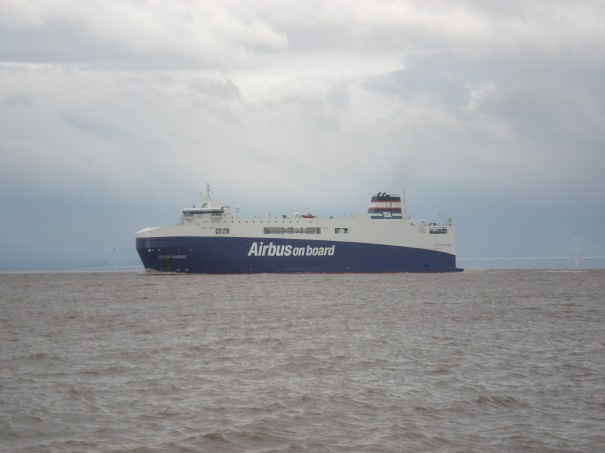
The City Of Hamburg. Compared to Felucca, not that far off the size of the actual city of Hamburg. And, it turns out, almost as far away.
Definitely unperturbed by their scrape with Davy Jones’ locker, Felucca and Gnum Pus churned through the rather considerable swell towards Avonmouth and then took a right hand turn up into the River Avon proper.
By now, the incoming tide does most of the work, and we enjoyed the gorgeous scenery of the steep-sided gorge as we swept inland towards Bristol.
The glorious Clifton Suspension Bridge is of special note, an elegant structure high above the river:
The crew snapped away on phones and cameras and ooh-ed and aah-ed at the architectural genius of Mr Brunel (note: not Mr Telford as idiotically and unforgivably suggested in version 1 of this post!) and his masterful way with iron and stone, thereby missing the red traffic light to Bristol lock, which unknown to us was lurking round the corner.
Harbour staff were scurrying around emptying the lock for our arrival, but we had minutes to wait. Meanwhile, the pesky tide, moments earlier our friendly ally as it whizzed us upstream, now threatened to drag us past the lock and to the treacherous unnavigable reaches beyond. Tom put all of Felucca’s 50 horsepowers into reverse but the current remained keen on either spinning us round perpendicular to the tide; or pushing us onto the mudbank on our right… After a few worrying minutes of ungainly manoeuvring, the big gates opened and we roared forward into the lock, not forgetting to nearly come a cropper one last time as the current across the entrance pushed us towards the right hand wall…
The size of the chamber reflects the majesty of the harbour beyond. Bristol Floating Harbour is two miles long and covers 70 acres. Originally, the big tidal range made mooring in the harbour a painful affair: half the time, the boats would be sat listing on steep mud. Even when the tide was up and the boats floating, the currents and silting caused significant problems. In the early 1800s, after centuries of prevaricating, and with Liverpool Docks becoming ever more competitive, the folk of Bristol hatched a clever scheme in which new channels were dug and a big lock installed. This removed the tidal flow in the harbour, allowing much-improved docking facilities.
Though most of the trade has gone, the harbour remains at the heart of Bristol city centre. It is an utterly charming stretch of calm, sun-kissed water, with the colourful terraces of northern Bristol overlooking the harbour from the hills above. Ships of all kinds, from narrowboats to cruisers to military craft, to Brunel’s SS Great Britain, line the quays. Canoeists, paddle boarders, sailors and rowers pootle up and down; two ferry companies ply a brisk, chaotic trade between the principle jetties of the city. All Bristol comes down to the harbour to sit, eat, drink and be merry; modern offices and flats contrast nicely with the stately old warehouses. It’s great.
And that’s where we are moored now, enjoying the jolly hospitality of the harbour, and wandering the optimistic modern shopping streets, and charming ancient passageways, of central Bristol. It’s a fitting spot to finish our latest tidal adventure.
Crossing the Wash was strange and great fun; cruising up the Thames under the great bridges of London was grand and breath-taking. But for the epic two-part journey, for the varied navigational challenges, for the history and for the landscapes, both bleak and majestic, this one tops the lot.
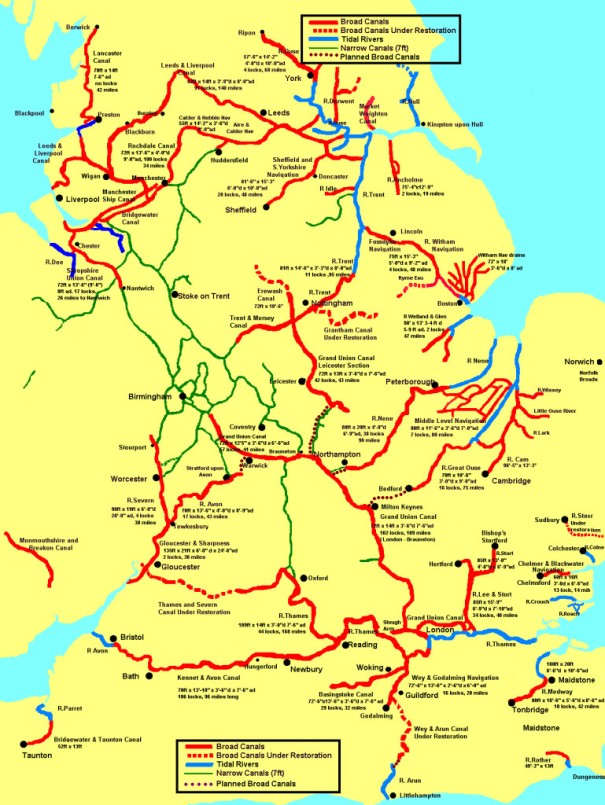
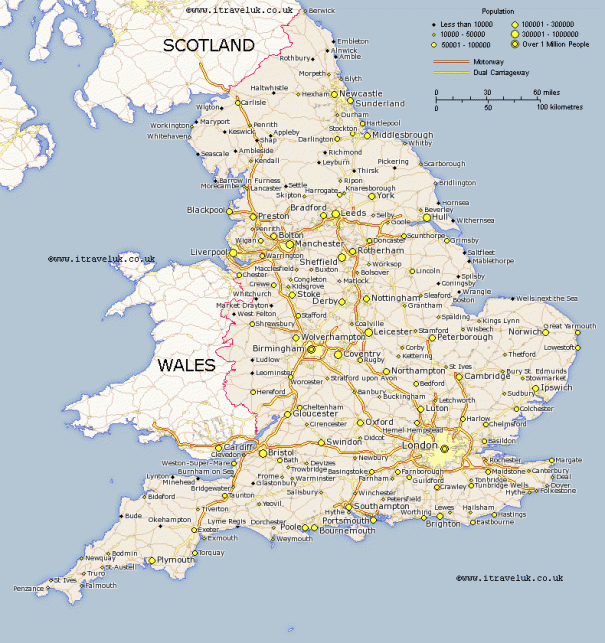
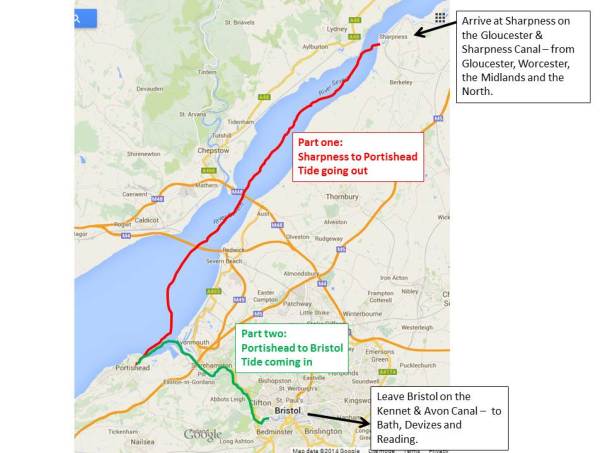
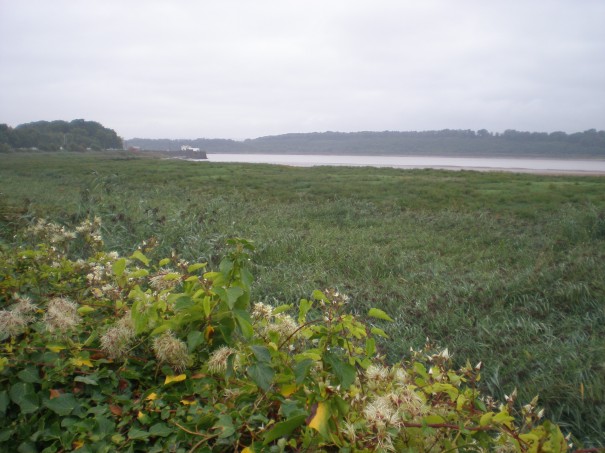
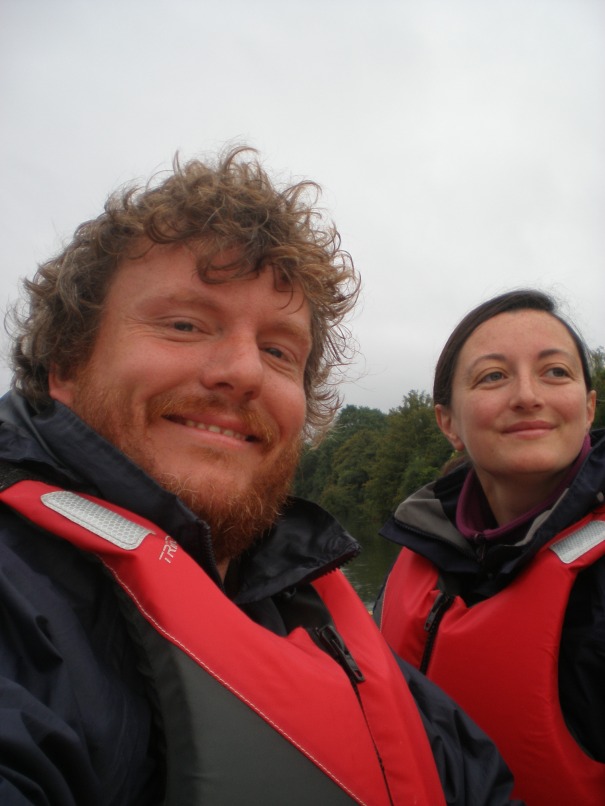
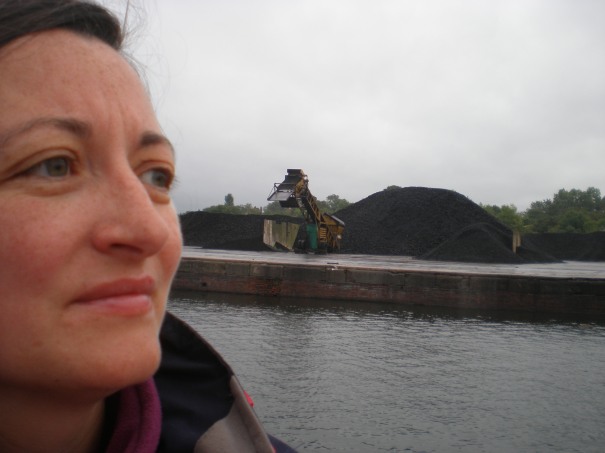
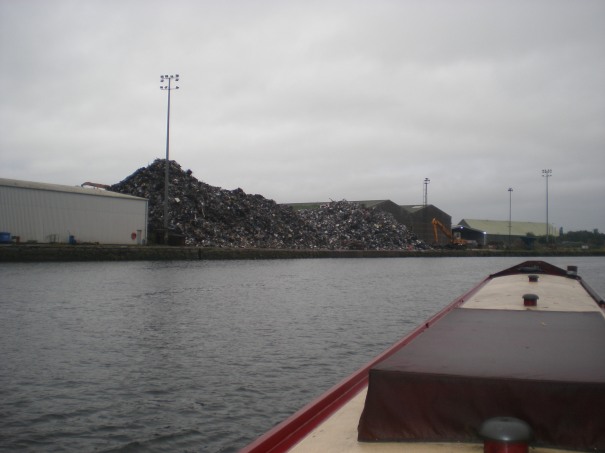
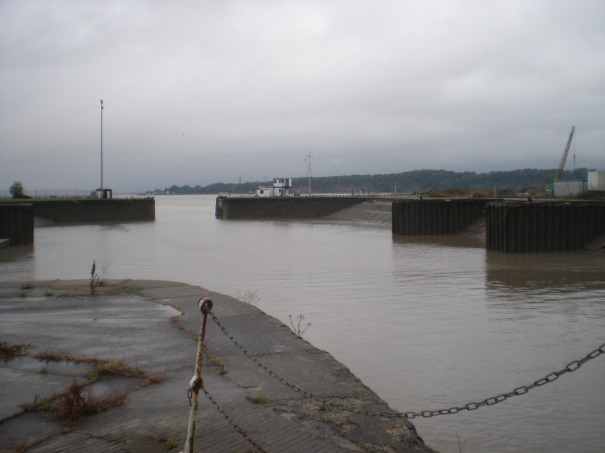
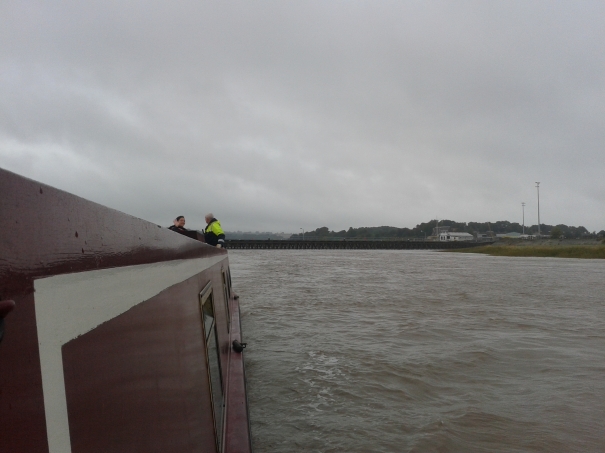
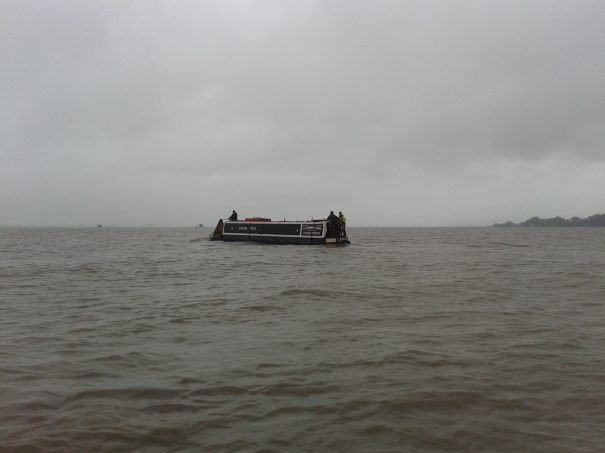
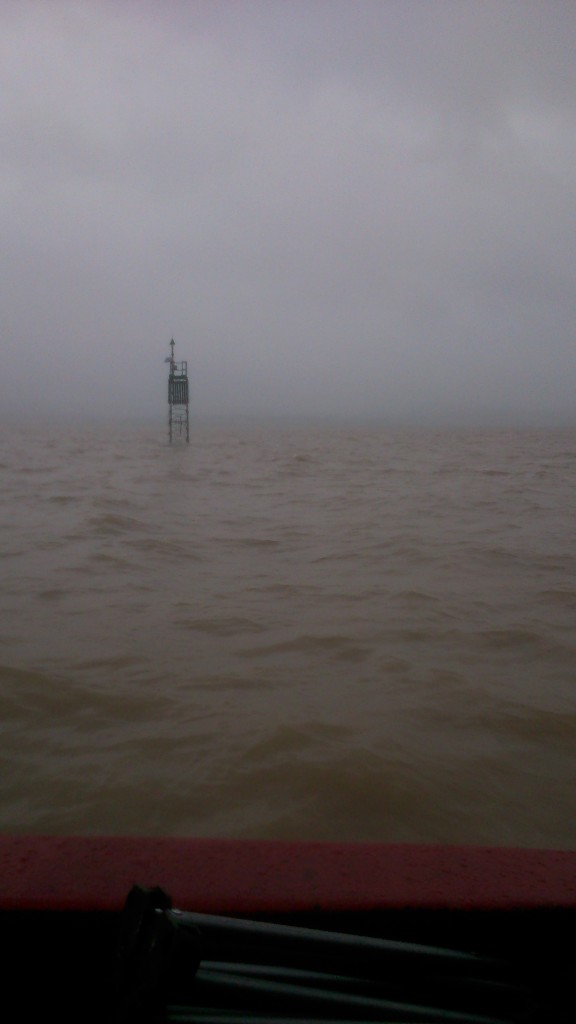
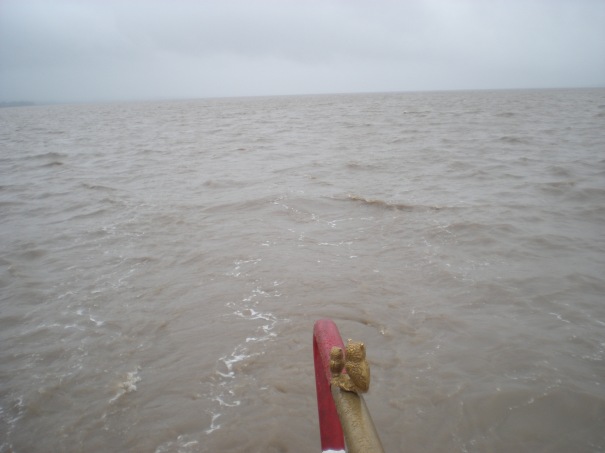
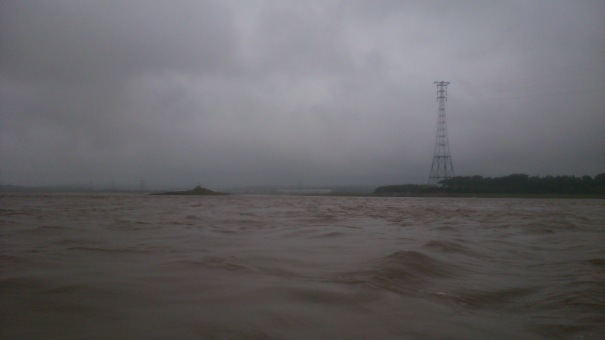
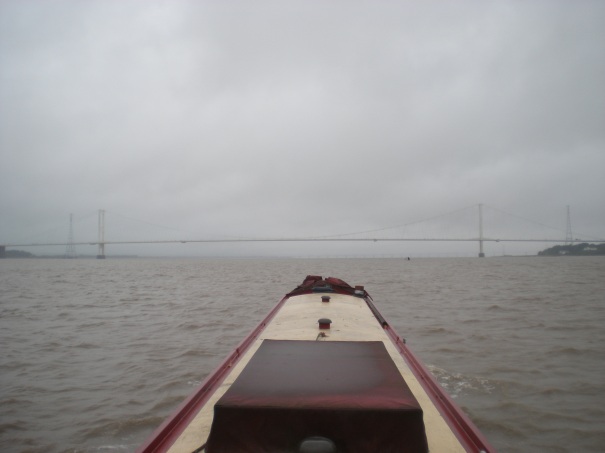
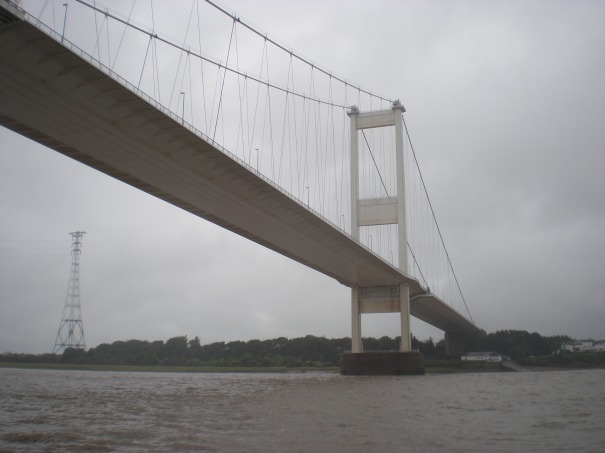
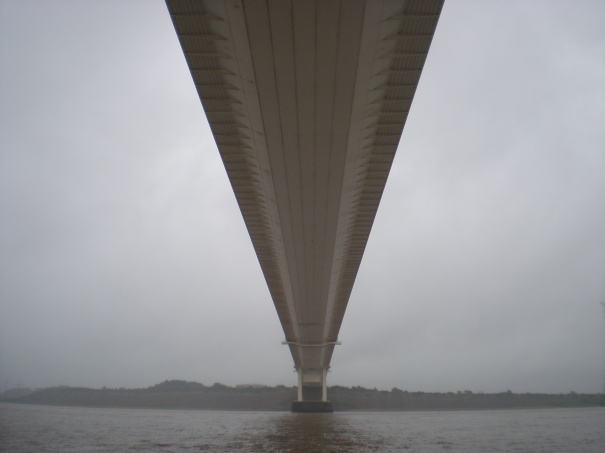
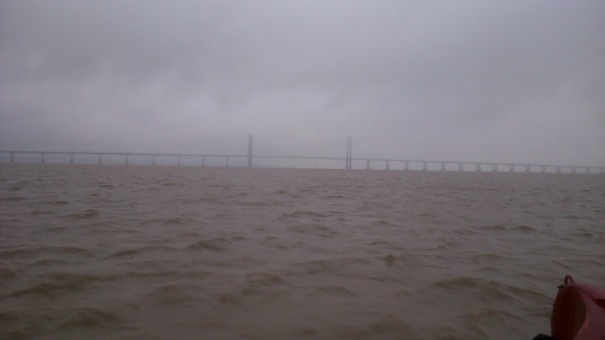
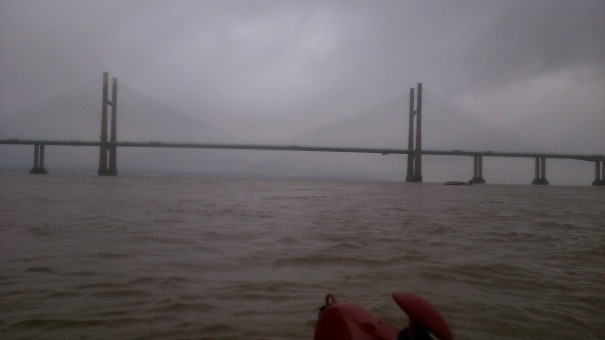
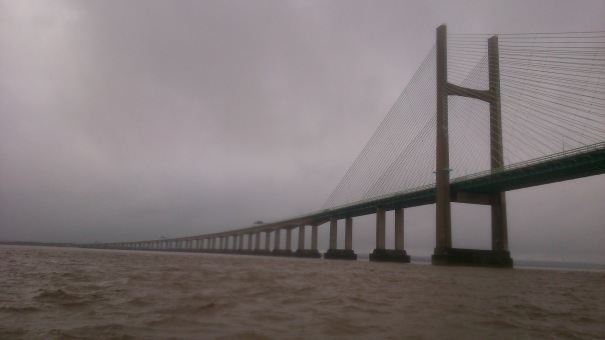
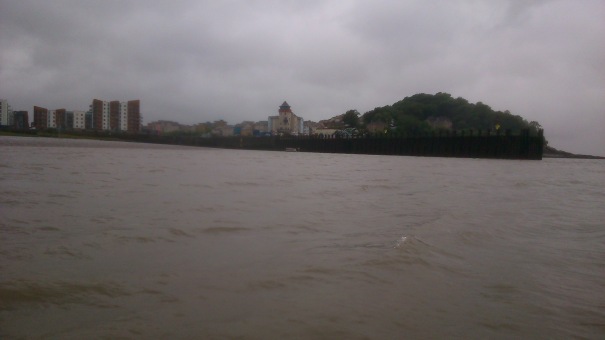
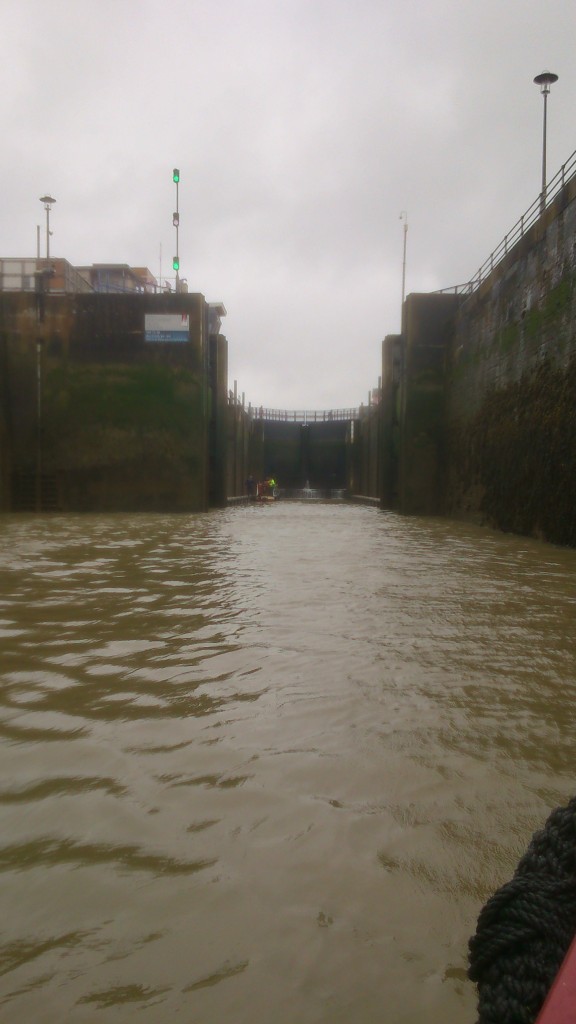
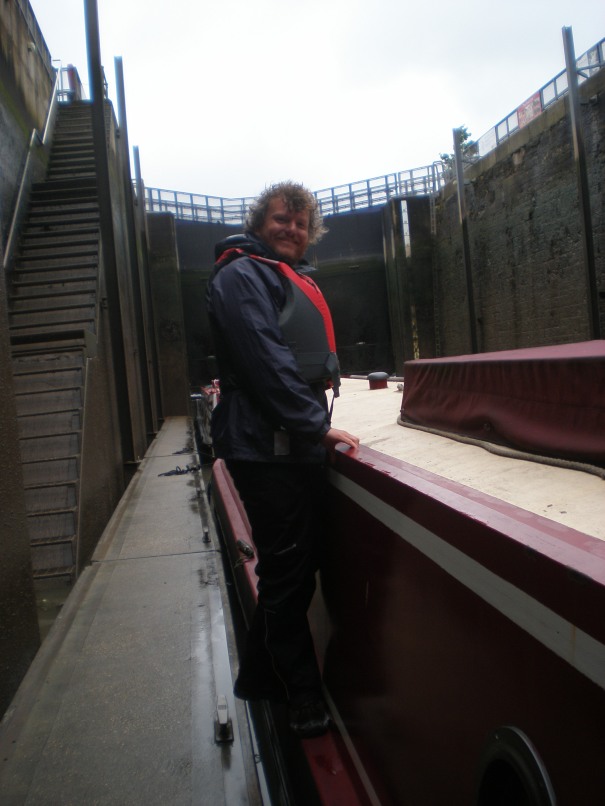
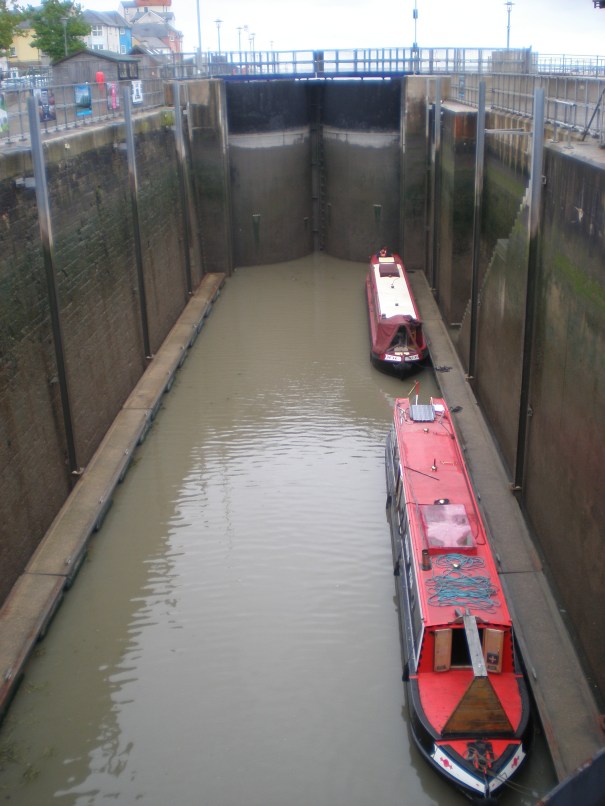
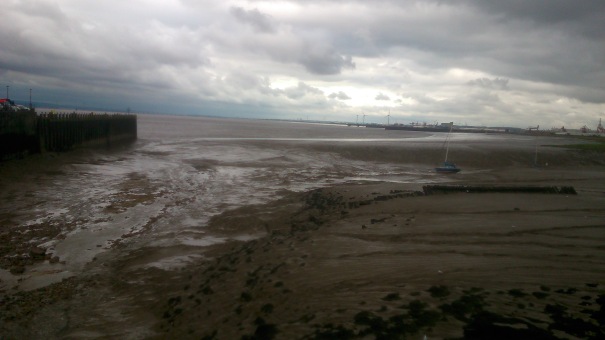
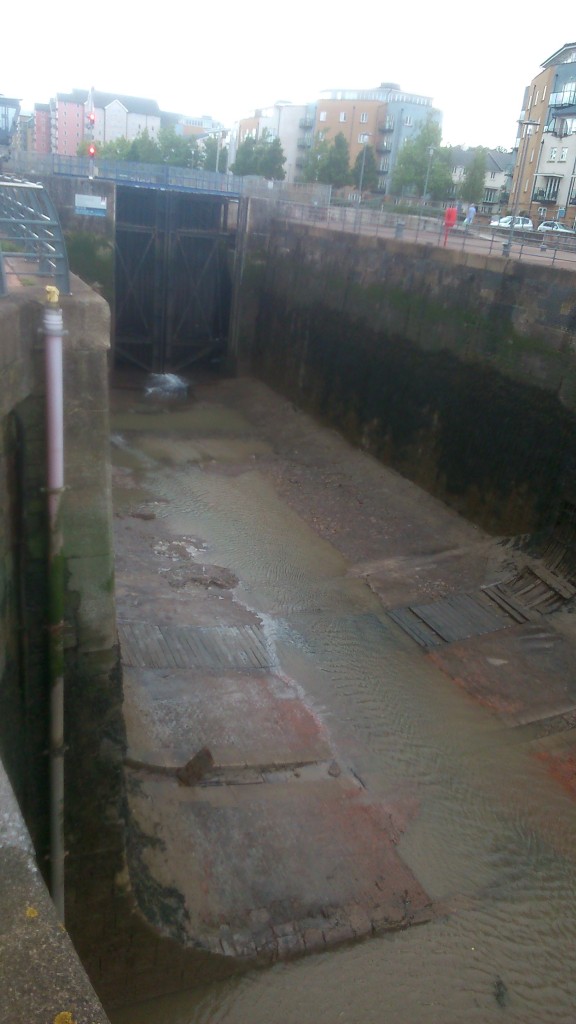
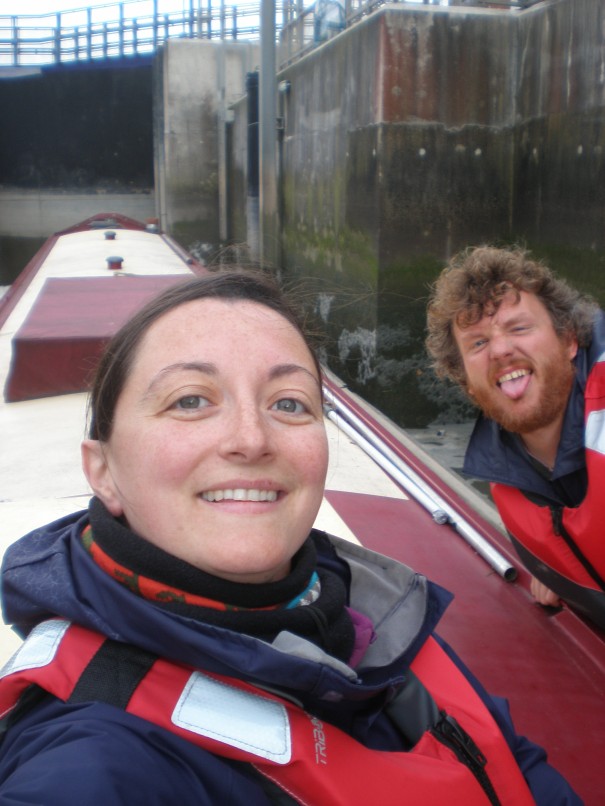
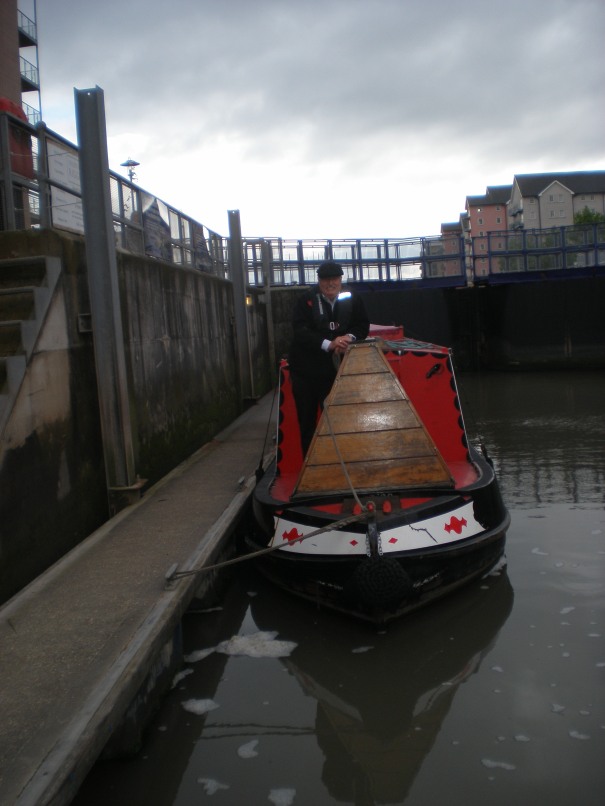
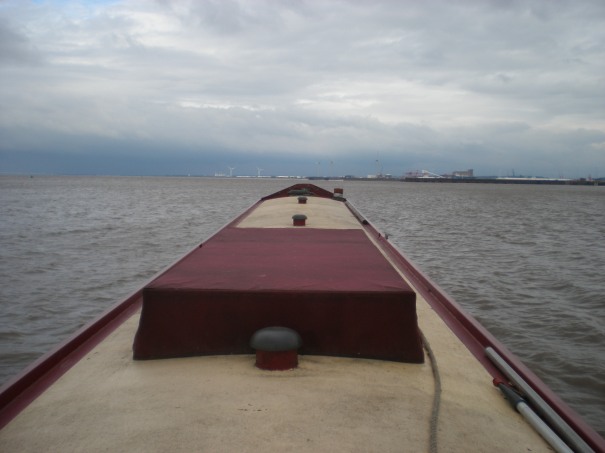
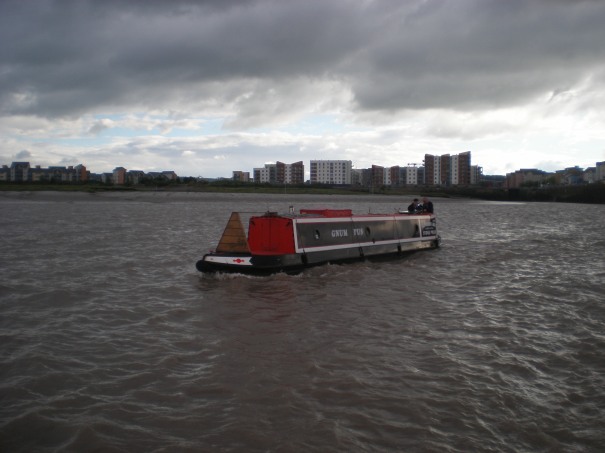
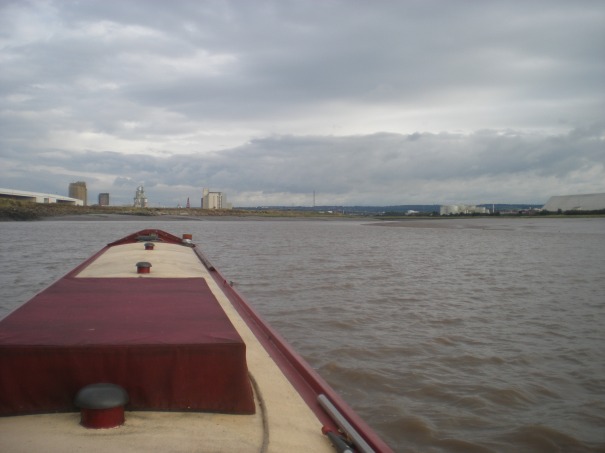

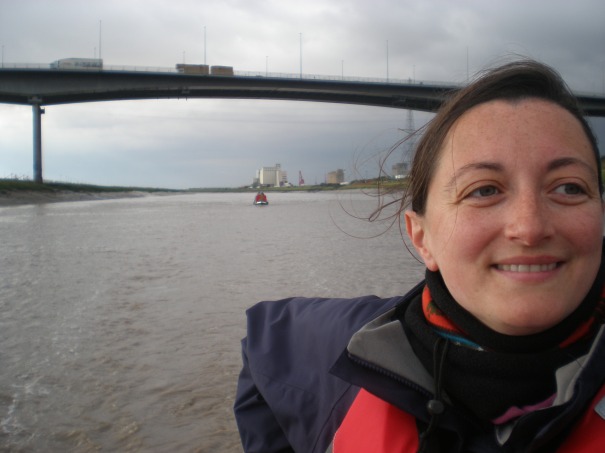
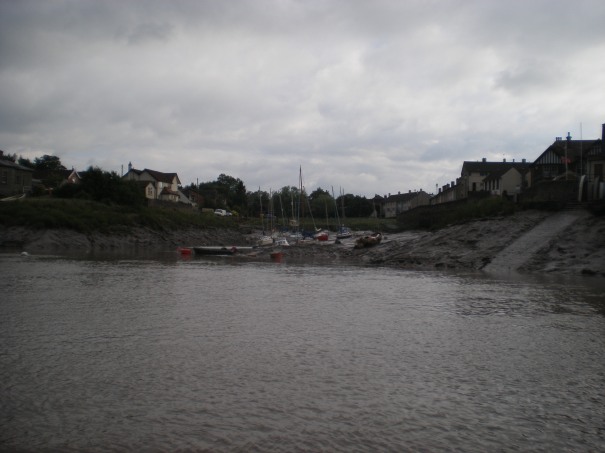
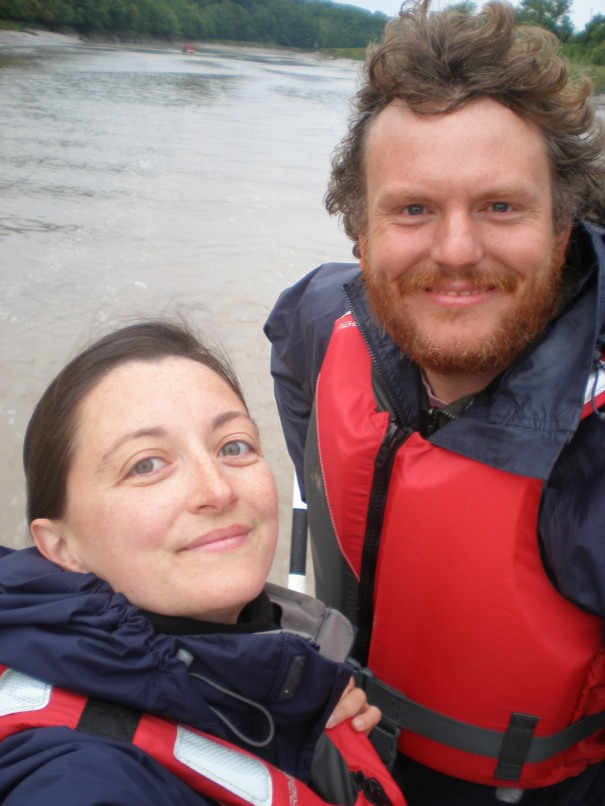
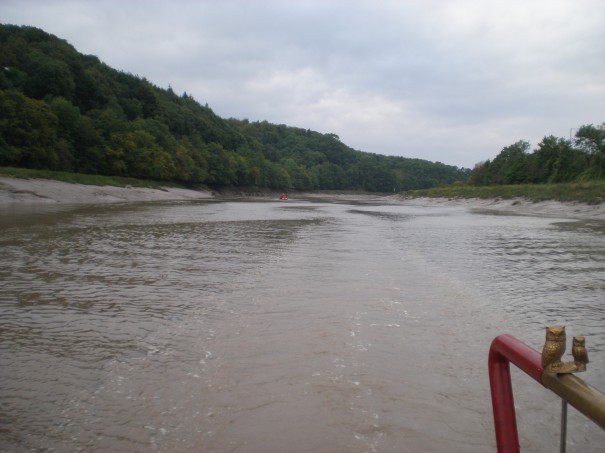
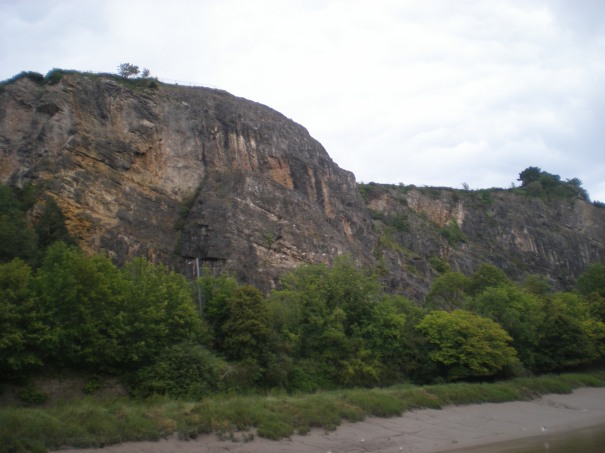
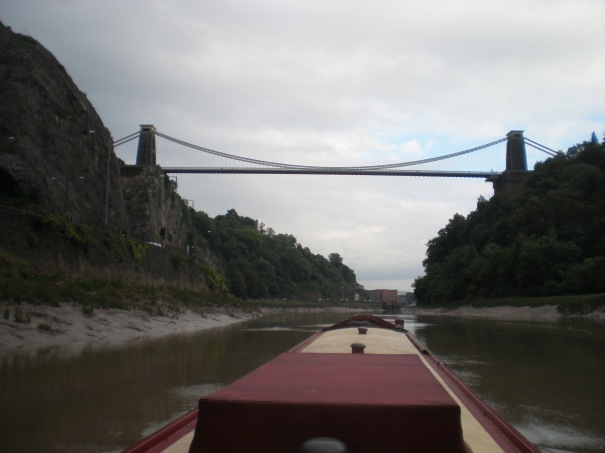
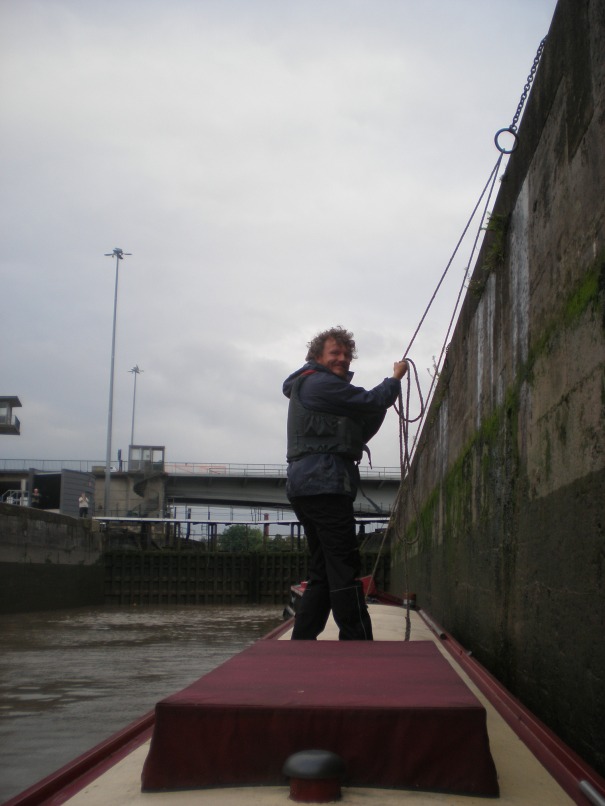
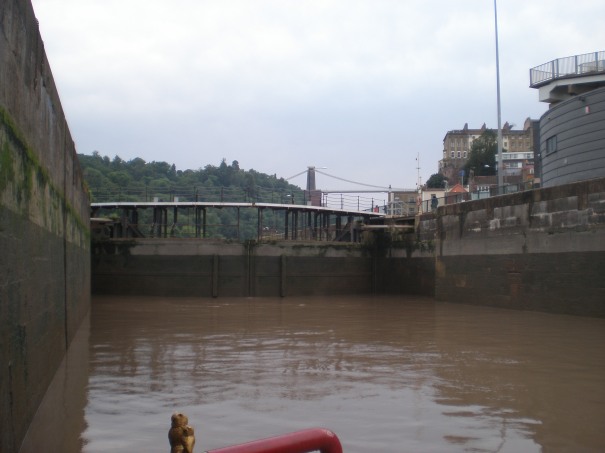
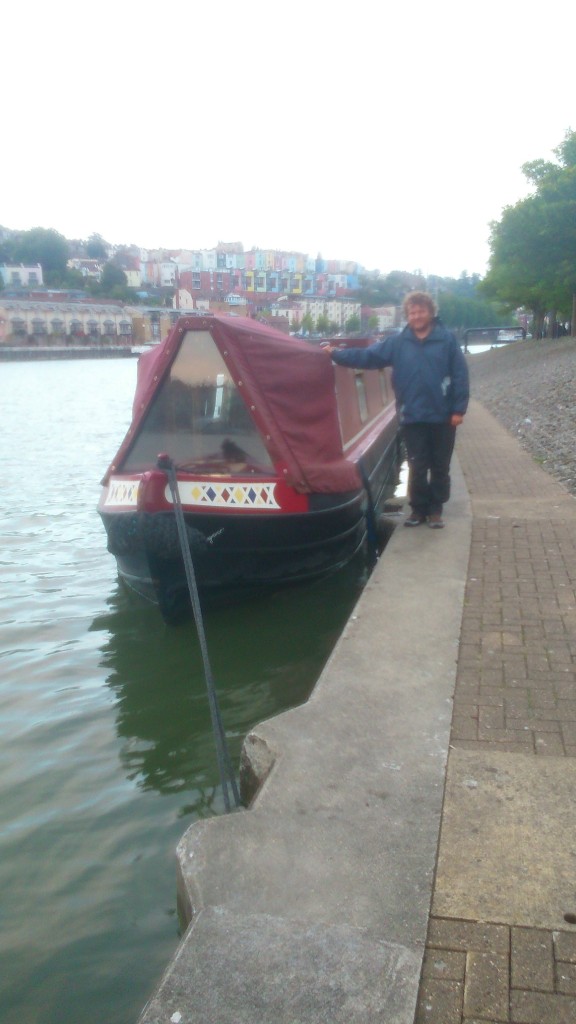
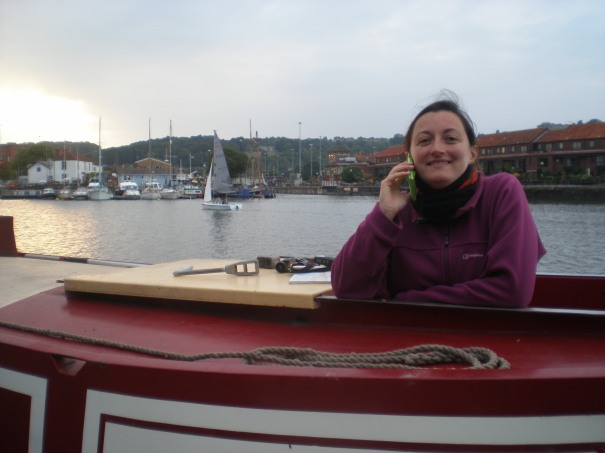
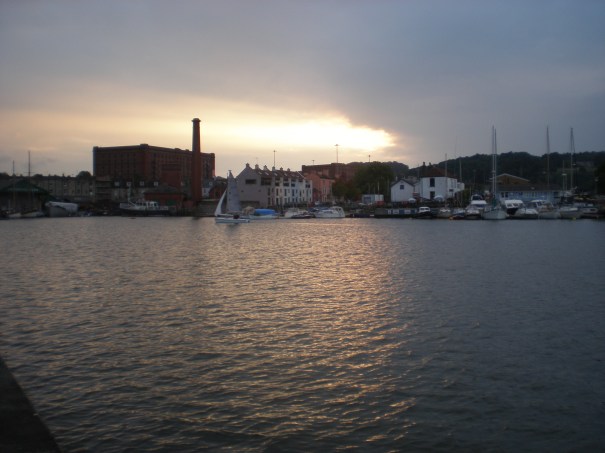
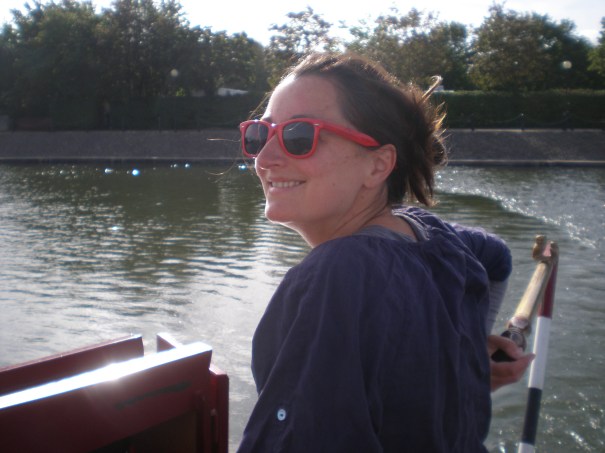
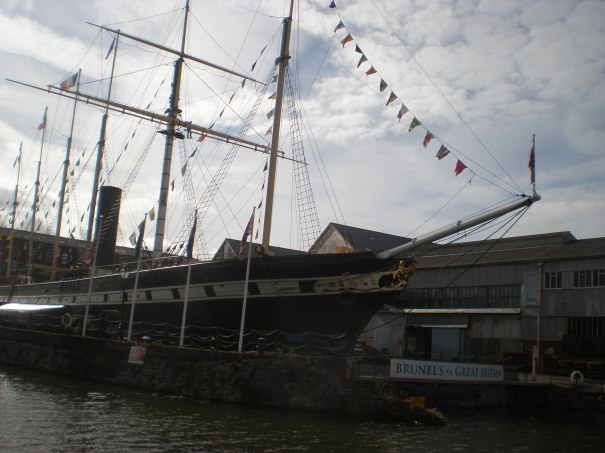
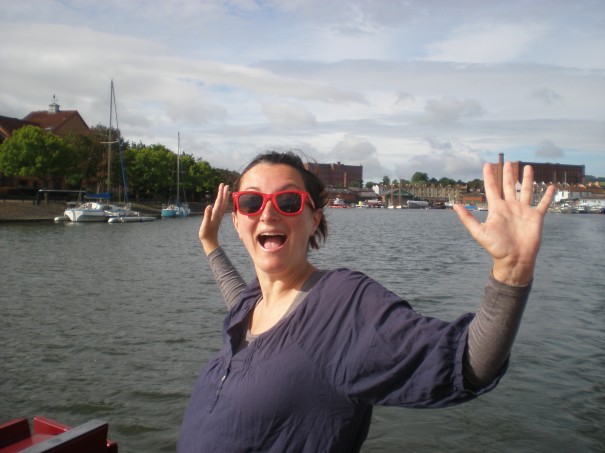
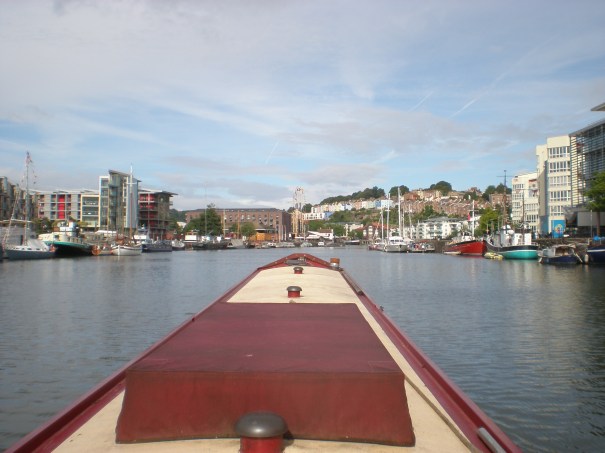
Think I’ve just about recovered from the sight of The Pride of Hamburg bearing down on us now! Tiller arm still a bit achy though!
Epic update for epic journey, one of the best if not the best, well done and understand the scale of the undertaking a bit more now! Enjoy the K&A as a pleasant wind down and see you in sheppey
Hi both. I thought I left a comment yesterday but it doesn’t seem to be there. You are clearly much more adventurous than us!
Sorry to have left without saying good bye. Washing and shopping were done and the sun was shining so we decided to put a few miles behind us. We expect to be in Newbury on Monday but guess we will be a bit ahead of you. Take care and stay in touch. Glyn x
Well done ‘Tomily’! Very impressed.
Hi there!
We are looking to take a Narrowboat onto the Severn and I stumbled across your blog – which I really enjoyed reading btw! We’d be going in the opposite direction, from Bristol up to Sharpness. I was wondering if we might be able to get in touch with you to get some advice on the trip?
Warm regards,
Peter
Brilliant blog. I live in Bristol and spotted a Narrowboat in the Gorge today, Googled it and found your blog.
An epic journey on some very sketchy stretches of water. I was bought up on narrowboat holidays so know how vulrable they are to bigger forces like the wind etc.
Serious respect for taking on the trip, would love to try it one day!
Thanks for commenting! Glad you enjoyed the read. We miss our Felucca days so it’s nice to think that they live on, in some way, on this blog.